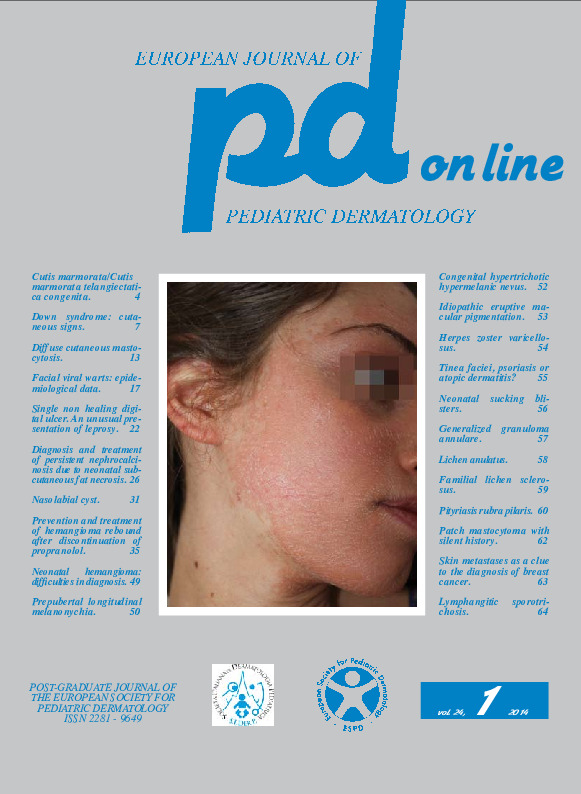Prepubertal longitudinal melanonychia
Downloads
How to Cite
Garofalo L., Bonifazi E. 2014. Prepubertal longitudinal melanonychia. Eur. J. Pediat. Dermatol. 24 (1):50 - 51.
pp. 50 - 51
Abstract
Case 1. A 10-month-old little girl had since birth a band-like pigmented lesion affecting the lateral third of the nail plate of the 5th left finger and most of the distal and lateral perinychium of the same finger (Fig. 1); the dermoscopic examination (Fig. 2) showed a parallel pattern on the skin and irregular longitudinal striae on the lamina: these findings led to the diagnosis of congenital melanocytic nevus.Case 2. A 18-month-old child presented since birth a pigmented band of the thumb, which had remained unchanged over time (Fig. 3, note the pseudo-Hutchinson, namely the pigmentation of the cuticle due to the transparency of the underlying nevus). These data led to the diagnosis of congenital longitudinal melanonychia.
Case 3. This 8-year-old boy presented for 2 months a blackish pigmentation of the right thumb. The physical examination showed a triangular pigmentation with base on the cuticle and apex located 2 mm from the distal edge (Fig. 4, courtesy Dr. Furnari): these data led to the diagnosis of melanonychia probably due to recent acquired melanocytic nevus of the nail matrix, which began in the middle of the base and then extended laterally to the sides where the deposition of melanin in the nail plate began late.
Keywords
Melanonychia

